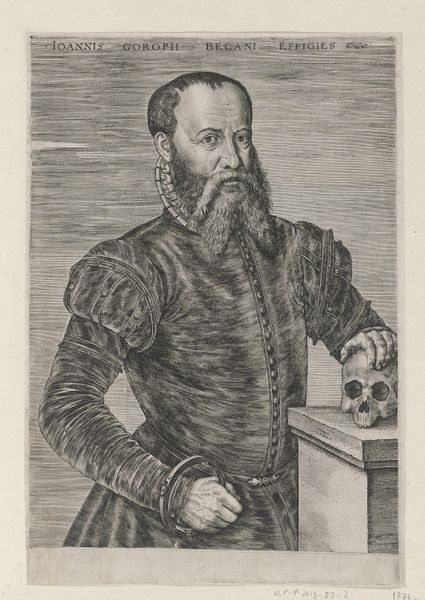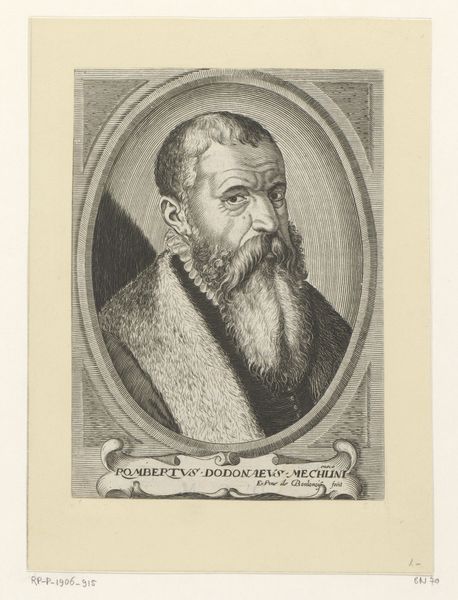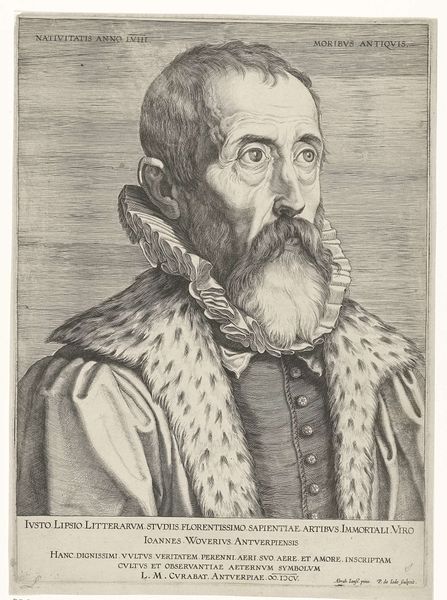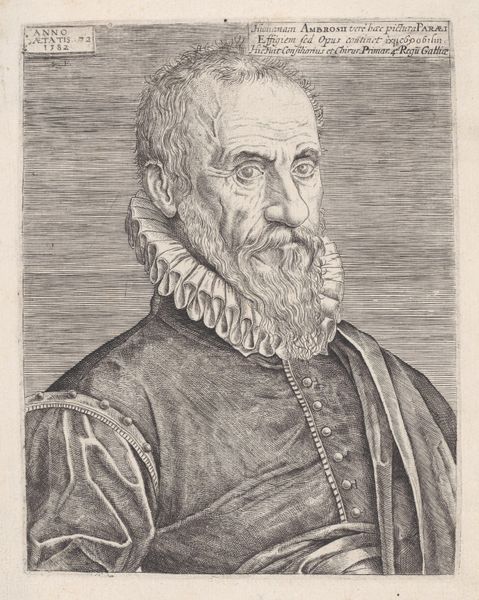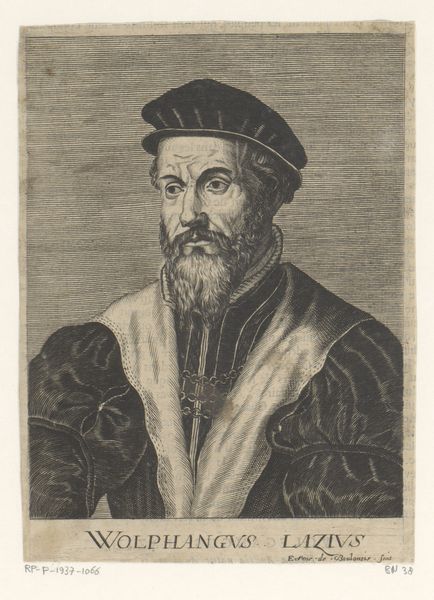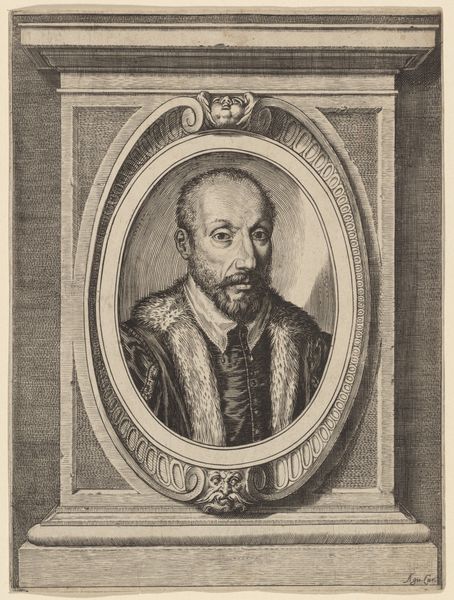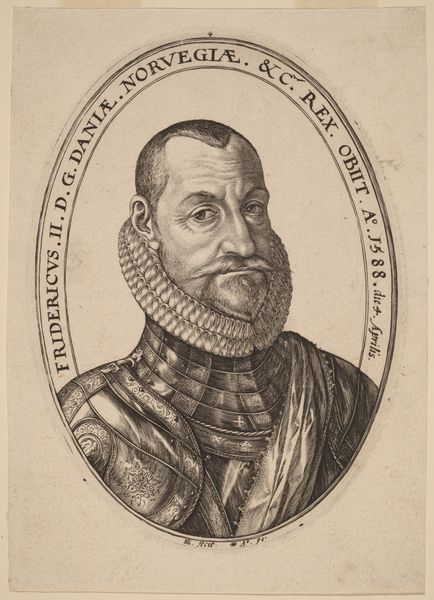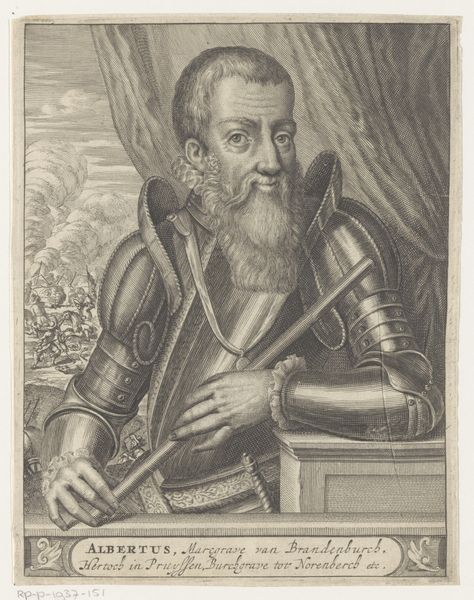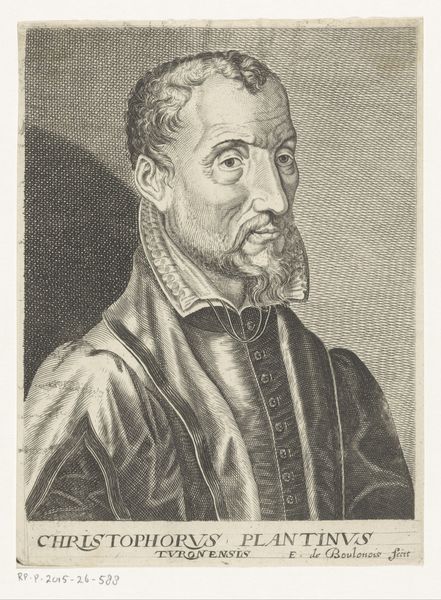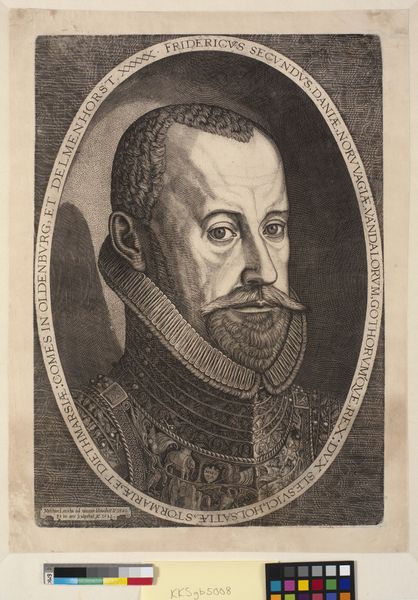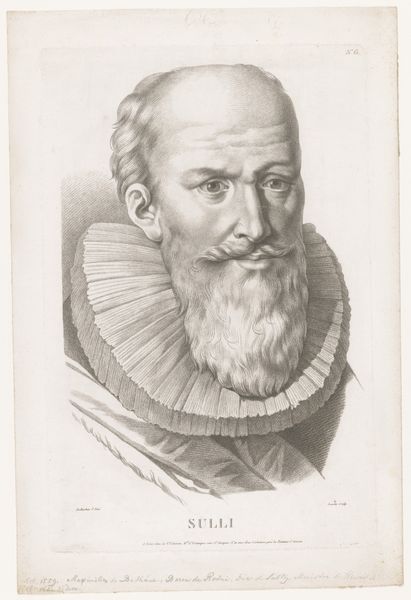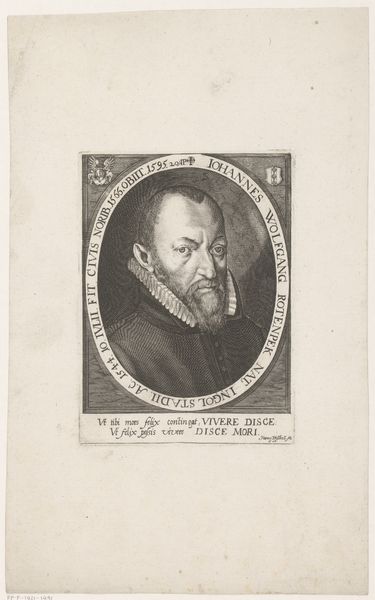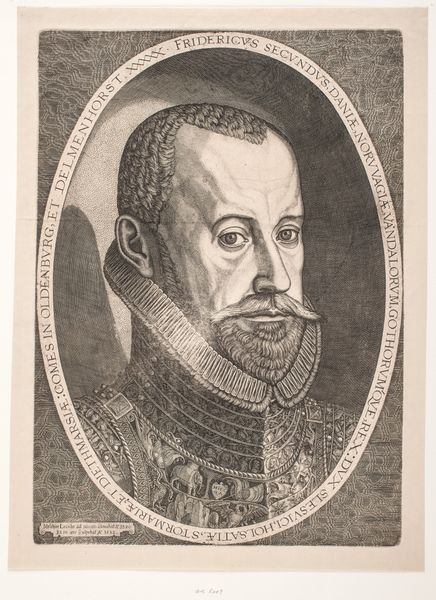
print, engraving
#
portrait
#
baroque
# print
#
old engraving style
#
engraving
Dimensions: height 190 mm, width 137 mm
Copyright: Rijks Museum: Open Domain
Curator: Immediately striking, isn't it? There’s a quiet authority emanating from this portrait. Editor: Yes, he looks formidable. The density of the line work—particularly in the clothing—gives him a very solid presence, a permanence. Curator: The work before us is Nicolas de Larmessin's 1682 engraving, "Portret van Fulvio Orsini," now held at the Rijksmuseum. Larmessin, of course, came from a family of renowned engravers, and this exemplifies his technical mastery. Orsini himself was a noted Italian humanist, scholar, and librarian for the powerful Farnese family. This image likely served a function in cultivating Orsini’s public persona. Editor: I immediately want to question whose gaze we are really meeting. The level of embellishment in his patterned coat contrasts rather interestingly with the plain backdrop and simple collar. The very visible baldness atop his head only serves to heighten a feeling of enforced masculinity through sartorial performance. Curator: Absolutely, dress and image played crucial roles in the construction of identity. Portraits such as these served a promotional purpose, asserting a person’s status and projecting an image they wished to convey to the world. This aligns directly with Baroque sensibilities that valorized grandeur. The details in the textures are truly superb when you consider this is achieved solely with line and negative space on a printed page. It certainly adds to his character, in a symbolic fashion. Editor: To me, I also see how portraits can serve a function of preservation or memorialization. Whose stories are these? Are there other portraits like this depicting lesser-known people from Orsini's life? What stories have been excluded in this seemingly neutral depiction of Renaissance Humanism? Curator: Those questions open critical pathways for examining historical power dynamics encoded within portraiture, no doubt. Ultimately, engravings such as these provide access into elite circles of Baroque Europe while showcasing exceptional artistry and design in the medium. Editor: And remind us to think critically about the stories art leaves out and the potential that still exists in examining a subject, an engraver, and an artwork within our own context.
Comments
No comments
Be the first to comment and join the conversation on the ultimate creative platform.
